Fluke 6080AN, 6080A User Manual

6080A/AN
SYNTHESIZED SIGNAL GENERATOR
Operator Manual
P/N 857748
OCTOBER 1989
©1989 John Fluke Mfg. Co., Inc. All rights reserved. Litho U.S.A.
WARRANTY
The JOHN FLUKE MFG. CO., INC warrants each instrument it manufactures to be free from defects in material and workmanship under normal use for 2 years from the date of purchase. This warranty extends only to the original purchaser. This warranty shall not apply to fuses, disposable batteries, or any product or parts that have been subject to misuse, neglect, accident, or abnormal conditions of operation.
In the event of failure of a product covered by this warranty, JOHN FLUKE MFG. CO., INC will repair and calibrate an instrument returned to an authorized Service Center within 2 years of the original purchase; provided the warrantor's examination discloses to its satisfaction that the product was defective. The warrantor may, at its option, replace the product in lieu of repair. With regard to any instrument returned within 2 years of the original purchase, said repairs or replacement will be made without charge. If the failure has been caused by misuse, neglect, accident, or abnormal conditions of operation, repairs will be billed at a nominal cost. In such case, an estimate will be submitted before work is stated if requested.
If any failure occurs, the following steps should be taken:
1.Notify the JOHN FLUKE MFG. CO., INC or nearest Service Center, giving full details of the difficulty. Include the model number, type number, and serial number.
On receipt of this information, service data or shipping instructions will be forwarded to you.
2.On receipt of the shipping instructions, forward the instrument, transportation prepaid.
Repairs will be made at the Service Center and the instrument will be returned prepaid.
SHIPPING TO MANUFACTURER FOR REPAIR OR ADJUSTMENT
All shipment of JOHN FLUKE MFG. CO., INC instruments should be shipped in the original packing carton (If available). If the original carton is not available, use any suitable container that is rigid and of adequate size. If a substitute container is used, the instrument should be wrapped in paper and surrounded with at least four inches of shock-absorbing material.
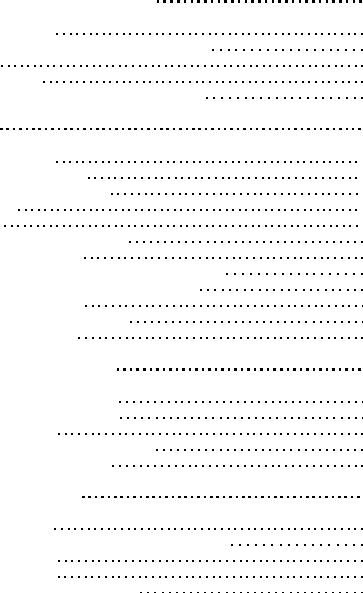
Table of Contents
SECTION |
|
TITLE |
PAGE |
1 |
INTRODUCTION AND SPECIFICATIONS |
1-1 |
|
|
1-1. |
INTRODUCTION |
1-1 |
|
1-2. |
UNPACKING THE SIGNAL GENERATOR |
1-1 |
|
1-3. |
SAFETY |
1-2 |
|
1-4. |
ACCESSORIES |
1-3 |
|
1-5. |
SIGNAL GENERATOR SPECIFICATIONS |
1-3 |
2 |
INSTALLATION |
2-1 |
|
|
2-1. |
INTRODUCTION |
2-1 |
|
2-2. |
INITIAL INSPECTION |
2-1 |
|
2-3. |
SERVICE INFORMATION |
2-1 |
|
2-4. |
Warranty |
2-1 |
|
2-5. |
Service |
2-1 |
|
2-6. |
SETTING UP THE 6080A/AN |
2-2 |
|
2-7. |
Power Requirements |
2-2 |
|
2-8. |
Line Voltage Selection and Fuse Replacement |
2-2 |
|
2-9. |
Rack or Bench Mounting the 6080A/AN |
2-3 |
|
2-10. |
Frequency Reference |
2-3 |
|
2-11. |
Local and Remote Operation |
2-3 |
|
2-12. |
Power-On Sequence |
2-3 |
3 |
SIGNAL GENERATOR FEATURES |
3-1 |
|
|
3-1. |
GENERAL INFORMATION |
3-1 |
|
3-2. |
FRONT PANEL FEATURES |
3-1 |
|
3-3. |
Display Features |
3-1 |
|
3-4. |
Front Panel Keys and Connectors |
3-1 |
|
3-5. |
REAR PANEL FEATURES |
3-1 |
4 |
FRONT PANEL OPERATION |
4-1 |
|
|
4-1. |
INTRODUCTION |
4-1 |
|
4-2. |
PARAMETER ENTRY AND MODIFICATION |
4-1 |
|
4-3. |
Parameter Entry |
4-1 |
|
4-4. |
Bright-Digit Edit |
4-2 |
|
4-5. |
Step Increment and Decrement |
4-3 |
i |
(continued on page ii) |
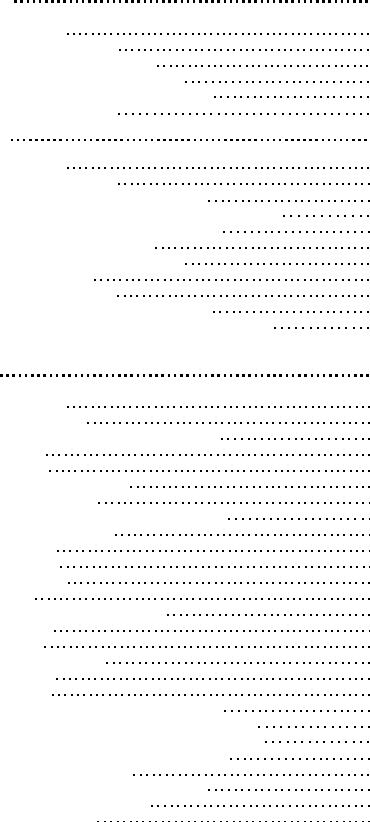
TABLE OF CONTENTS, continued
SECTION |
|
TITLE |
PAGE |
4A |
RF FREQUENCY |
4A-1 |
|
|
4A-1. |
INTRODUCTION |
4A-1 |
|
4A-2. |
RF FREQUENCY ENTRY |
4A-1 |
|
4A-3. RF FREQUENCY STEP ENTRY |
4A-1 |
|
|
4A-4. RF FREQUENCY RELATIVE MODE |
4A-2 |
|
|
4A-5. |
EXTERNAL FREQUENCY REFERENCE |
4A-3 |
|
4A-6. |
RF FREQUENCY BANDS |
4A-3 |
4B |
RF AMPLITUDE |
4B-1 |
|
|
4B-1. |
INTRODUCTION |
4B-1 |
|
4B-2. |
RF AMPLITUDE ENTRY |
4B-1 |
|
4B-3. |
RF AMPLITUDE UNITS CONVERSION |
4B-2 |
|
4B-4. |
ALTERNATE DB REFERENCE UNITS SELECTION |
4B-2 |
|
4B-5. |
UNTERMINATED OUTPUT (EMF) MODE |
4B-3 |
|
4B-6. |
RF AMPLITUDE STEP ENTRY |
4B-4 |
|
4B-7. RF AMPLITUDE RELATIVE MODE |
4B-4 |
|
|
4B-8. |
RF OUTPUT ON/OFF |
4B-6 |
|
4B-9. |
RF AMPLITUDE BANDS |
4B-6 |
|
4B-10. |
RF AMPLITUDE FIXED-RANGE MODE |
4B-7 |
|
4B-11. ALTERNATE OUTPUT COMPENSATION MODES |
4B-8 |
|
|
4B-12. |
SELECTING ALTERNATE OUTPUT COMPENSATION DATA ... 4B-8 |
|
4C |
MODULATION |
4C-1 |
|
|
4C-1. |
INTRODUCTION |
4C-1 |
|
4C-2. |
MODULATION, AM |
4C-1 |
|
4C-3. |
AM Depth and AM Depth Step Size Entry |
4C-2 |
|
4C-4. |
Internal AM |
4C-3 |
|
4C-5. |
External AM |
4C-3 |
|
4C-6. |
External AM, DC Coupled |
4C-3 |
|
4C-7. |
MODULATION, FM/ø |
4C-3 |
|
4C-8. |
FM/ø Deviation and FM/ø Step Size Entry |
4C-4 |
|
4C-9. |
FM/ø Units Conversion |
4C-5 |
|
4C-10. |
Internal FM/ø |
4C-6 |
|
4C-11. |
External FM/ø |
4C-6 |
|
4C-12. |
External DCFM |
4C-6 |
|
4C-13. |
FM Bands |
4C-7 |
|
4C-14. |
Low Distortion/Fixed-Range FM |
4C-8 |
|
4C-15. |
Low Rate FM |
4C-9 |
|
4C-16. |
High Rate ø |
4C-9 |
|
4C-17. |
MODULATION, PULSE |
4C-10 |
|
4C-18. |
External Pulse |
4C-10 |
|
4C-19. |
Internal Pulse |
4C-10 |
|
4C-20. |
INTERNAL MODULATION OSCILLATOR |
4C-10 |
|
4C-21. |
Modulation Frequency Entry and Step Size Entry |
4C-10 |
|
4C-22. Extended Resolution Modulation Frequency Entry |
4C-12 |
|
|
4C-23. |
Modulation Level Entry and Step Size Entry |
4C-12 |
|
4C-24. |
Modulation Output On/Off |
4C-14 |
|
4C-25. |
Internal Modulation Waveform Selection |
4C-14 |
|
4C-26. |
Internal Pulse Generator Mode |
4C-15 |
|
4C-27. |
Pulse Width Selection |
4C-16 |
ii |
(continued on page iii) |
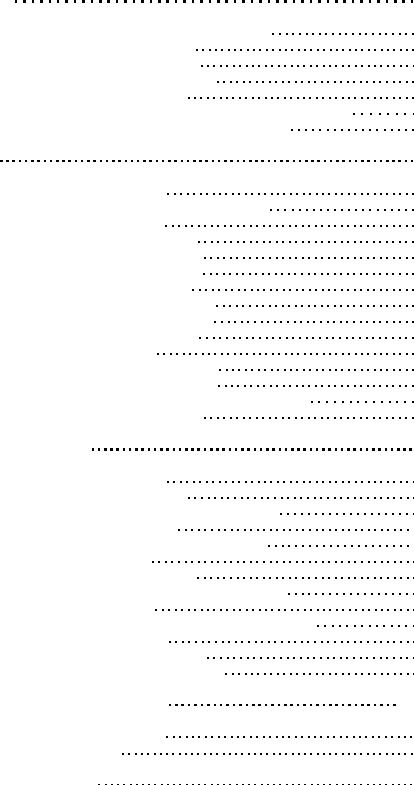
TABLE OF CONTENTS, continued
SECTION |
|
TITLE |
PAGE |
4D |
MEMORY |
4D-1 |
|
|
4D-1. |
ORGANIZATION OF 6080A/AN MEMORY |
4D-1 |
|
4D-2. STORE AND RECALL ENTRY |
4D-3 |
|
|
4D-3. |
MEMORY SEQUENCE ENTRY |
4D-4 |
|
4D-4. |
MEMORY SEQUENCE DIVIDERS |
4D-4 |
|
4D-5. |
MEMORY LOCATION LOCK |
4D-6 |
|
4D-6. RESET MEMORY TO DEFAULT MEMORY LOCATION |
4D-6 |
|
|
4D-7. SINGLE PARAMETER STORE AND RECALL |
4D-6 |
|
4E |
SWEEP |
4E-1 |
|
|
4E-1. |
GENERAL DESCRIPTION |
4E-1 |
|
4E-2. SELECTING THE DIGITAL SWEEP FIELD |
4E-2 |
|
|
4E-3. |
DIGITAL SWEEP MODES |
4E-2 |
|
4E-4. |
DIGITAL SWEEP SYMMETRY |
4E-3 |
|
4E-5. |
DIGITAL SWEEP DWELL TIME |
4E-3 |
|
4E-6. |
DIGITAL FREQUENCY SWEEP |
4E-4 |
|
4E-7. |
Frequency Sweep Width Entry |
4E-5 |
|
4E-8. |
Frequency Sweep Increment Entry |
4E-5 |
|
4E-9. |
Digital Frequency Sweep Example |
4E-6 |
|
4E-10. |
DIGITAL AMPLITUDE SWEEP |
4E-6 |
|
4E-11. |
Amplitude Sweep Width |
4E-8 |
|
4E-12. Amplitude Sweep Increment Entry |
4E-8 |
|
|
4E-13. |
Example Digital Amplitude Sweep |
4E-9 |
|
4E-14. |
CALIBRATION OF RECORDER/OSCILLOSCOPE |
4E-10 |
|
4E-15. |
ANALOG FREQUENCY SWEEP |
4E-10 |
4F |
SPECIAL FUNCTIONS |
4F-1 |
|
|
4F-1. |
GENERAL DESCRIPTION |
4F-1 |
|
4F-2. |
SPECIAL FUNCTION ENTRY |
4F-3 |
|
4F-3. |
VIEWING ENABLED SPECIAL FUNCTIONS |
4F-3 |
|
4F-4. |
THE SPCL ANNUNCIATOR |
4F-3 |
|
4F-5. |
MISCELLANEOUS SPECIAL FUNCTIONS |
4F-3 |
|
4F-6. |
Clear Special Functions |
4F-3 |
|
4F-7. |
Restore Instrument Preset State |
4F-4 |
|
4F-8. |
Execute Self-Test and Display Self-Test Results |
4F-4 |
|
4F-9. |
Display Loaded Options |
4F-4 |
|
4F-10. |
Display Instrument ID and Software Revision Level |
4F-4 |
|
4F-11. |
Blank Front Panel Display |
4F-4 |
|
4F-12. |
Select Repeat Rate for Step Keys |
4F-4 |
|
4F-13. Configure Edit Knob and Step Keys |
4F-4 |
|
4G |
ERROR AND STATUS REPORTING |
.. 4G-1 |
|
|
4G-1. |
GENERAL DESCRIPTION |
4G-1 |
|
4G-2. |
THE STATUS KEY |
4G-1 |
|
4G-3. |
SELF-TEST AND CALIBRATION/COMPENSATION |
|
|
|
DATA STATUS |
4G-2 |
iii |
(continued on page iv) |
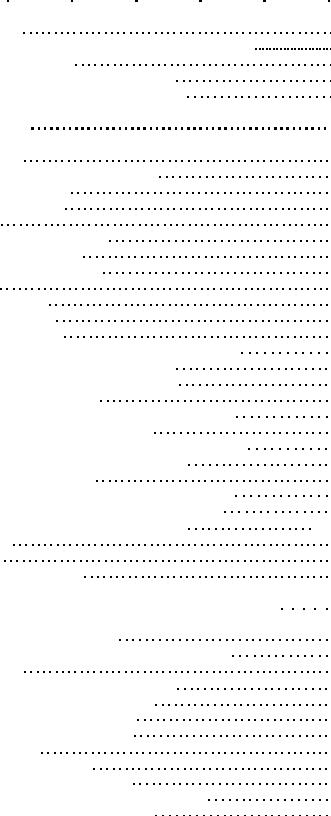
TABLE OF CONTENTS, continued
SECTION |
|
TITLE |
|
PAGE |
|
5 |
REMOTE OPERATION |
|
|
5-1 |
|
|
5-1. |
INTRODUCTION |
|
|
5-1 |
|
5-2. |
SETTING UP THE IEEE-488 INTERFACE |
.. |
|
5-1 |
|
5-3. |
Address Setup Procedure |
|
|
5-1 |
|
5-4. |
Talker/Listener Mode Selection Procedure |
|
|
5-2 |
|
5-5. |
Compatibility Language Selection Procedure |
|
|
5-2 |
5A |
REMOTE PROGRAMMING |
|
|
5A-1 |
|
|
5A-1. |
INTRODUCTION |
|
|
5A-l |
|
5A-2. |
COMMAND SYNTAX INFORMATION |
|
|
5A-2 |
|
5A-3. |
Parameter Syntax Rules |
|
|
5A-2 |
|
5A-4. |
Extra Space Characters |
|
|
5A-3 |
|
5A-5. |
Terminators |
|
|
5A-3 |
|
5A-6. |
Incoming Character Processing |
|
|
5A-3 |
|
5A-7. |
Response Message Syntax |
|
|
5A-4 |
|
5A-8. |
INPUT BUFFER OPERATION |
|
|
5A-4 |
|
5A-9. |
COMMANDS |
|
|
5A-4 |
|
5A-10. |
Multiple Commands |
|
|
5A-4 |
|
5A-11. |
Command Processing |
|
|
5A-4 |
|
5A-12. |
Command Restrictions |
|
|
5A-5 |
|
5A-13. Commands That Require the CAL|COMP Switch Set |
|
|
5A-5 |
|
|
5A-14. |
REMOTE/LOCAL STATE TRANSITIONS |
|
|
5A-5 |
|
5A-15. CHECKING THE INSTRUMENT STATUS |
|
|
5A-7 |
|
|
5A-16. |
Serial Poll Status Byte (STB) |
|
|
5A-7 |
|
5A-17. |
BIT ASSIGNMENTS FOR THE STB AND SRE |
|
|
5A-7 |
|
5A-18. |
SERVICE REQUEST LINE (SRQ) |
|
|
5A-9 |
|
5A-19. |
SERVICE REQUEST ENABLE REGISTER (SRE) |
|
|
5A-9 |
|
5A-20. |
PROGRAMMING THE STB AND SRE |
|
|
5A-10 |
|
5A-21. |
Event Status Register (ESR) |
|
|
5A-10 |
|
5A-22. |
BIT ASSIGNMENTS FOR THE ESR AND ESE |
|
|
5A-10 |
|
5A-23. |
EVENT STATUS ENABLE REGISTER (ESE) |
|
|
5A-12 |
|
5A-24. |
PROGRAMMING THE ESR AND ESE |
|
.. |
5A-12 |
|
5A-25. |
Output Queue |
|
|
5A-13 |
|
5A-26. |
Error Queue |
|
|
5A-13 |
|
5A-27. |
Instrument Status Register |
|
|
5A-14 |
|
5A-28. |
BIT ASSIGNMENTS FOR THE ISR, ISCR, AND ISCE |
..... |
5A-14 |
|
|
5A-29. |
INSTRUMENT STATUS CHANGE REGISTER (ISCR) |
|
5A-14 |
|
|
5A-30. |
INSTRUMENT STATUS CHANGE |
|
|
|
|
|
ENABLE REGISTER (ISCE) |
|
|
5A-15 |
|
5A-31. |
PROGRAMMING THE ISR, ISCR, AND ISCE |
|
|
5A-15 |
|
5A-32. |
Status Queue |
|
|
5A-16 |
|
5A-33. |
IEEE-488 INTERFACE CONFIGURATION |
|
|
5A-16 |
|
5A-34. |
BUS COMMUNICATION OVERVIEW |
|
|
5A-16 |
|
5A-35. |
Definition: Queries and Commands |
|
|
5A-17 |
|
5A-36. |
Functional Elements of Commands |
|
|
5A-17 |
|
5A-37. |
Interface Messages |
|
|
5A-19 |
|
5A-38. |
THE IEEE-488 CONNECTOR |
|
|
5A-21 |
|
5A-39. |
REMOTE PROGRAM EXAMPLES |
|
|
5A-22 |
|
5A-40. Using the *OPC?, *OPC, and *WAI Commands |
|
|
5A-22 |
|
|
5A-41. |
Using the *DDT and TRG Commands |
|
|
5A-23 |
iv |
(continued on page v) |
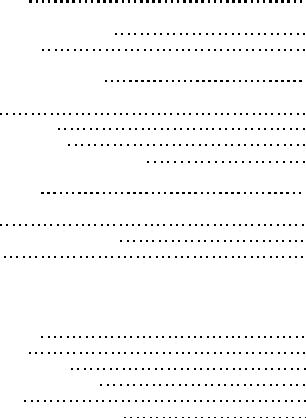
TABLE OF CONTENTS, continued
SECTION |
|
TITLE |
PAGE |
||
5B |
REMOTE COMMAND TABLE |
|
5B-1 |
||
|
5B-1. |
REMOTE COMMAND SUMMARY |
|
5B-1 |
|
|
5B-2. |
REMOTE COMMANDS |
|
5B-1 |
|
5C |
TALK-ONLY/LISTEN-ONLY OPERATION |
|
5C-1 |
||
|
5C-1. |
INTRODUCTION |
|
5C-1 |
|
|
5C-2. |
TALK-ONLY OPERATION |
|
5C-1 |
|
|
5C-3. |
LISTEN-ONLY OPERATION |
|
5C-2 |
|
|
5C-4. |
LISTEN-ONLY/TALK-ONLY EXAMPLE |
|
5C-2 |
|
5D |
COMPATIBILITY LANGUAGES |
|
5D-1 |
||
|
5D-1. |
INTRODUCTION |
|
5D-1 |
|
|
5D-2. |
PROGRAMMING THE LANGUAGE |
|
5D-1 |
|
|
5D-3. |
Incompatibilities |
|
5D-1 |
|
|
5D-4. |
Converting 6060 and 6070 Programs to Use the 6080 Language |
|
5D-2 |
|
|
APPENDICES |
|
|
|
|
A |
INSTRUMENT PRESET STATE |
|
A-l |
||
B |
SPECIAL FUNCTION TABLE |
|
B-l |
||
C |
REJECTED ENTRY ERROR CODES |
|
C-l |
||
D |
OVERRANGE/UNCAL STATUS CODES |
|
D-l |
||
E |
SELF-TEST STATUS CODES |
|
E-l |
||
F |
REAR PANEL AUX CONNECTOR PINOUT |
|
F-l |
||
v/vi
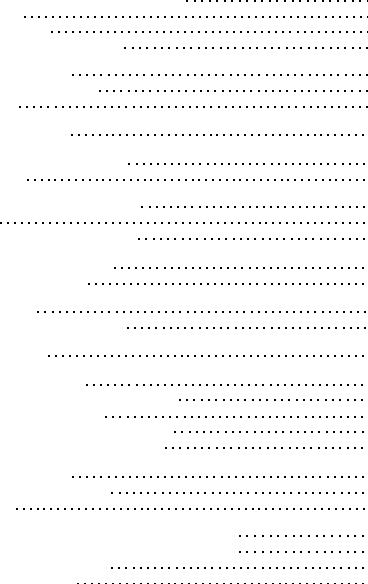
List of Tables
TABLE |
TITLE |
PAGE |
1-1. |
Accessories Included with Each Signal Generator |
1-3 |
1-2. |
Optional Accessories |
1-3 |
1-3. |
6080A/AN Specifications |
1-4 |
1-4. |
Typical Signal Generator Performance |
1-9 |
3-1. |
Front Panel Display Features |
3-3 |
3-2. |
Front Panel Keys and Connectors |
3-6 |
3-3. |
Rear Panel Features |
3-10 |
4A-1. |
6080A/AN Frequency Bands |
4A-3 |
4B-1. Relative Amplitude Unit Combinations |
4B-5 |
|
4B-2. |
RF Amplitude Bands |
4B-7 |
4C-1. FM/ø Deviation Limits (FM/ø Enabled) |
4C-5 |
|
4C-2. |
FM Band Limits |
4C-7 |
4C-3. FM Band Limits - Low Distortion Mode |
4C-8 |
|
4D-1. |
Non-Storable/Recallable Parameters |
4D-1 |
4D-2. |
Non-volatile Memory Locations |
4D-2 |
4F-1. |
Special Function Codes |
4F-2 |
4F-2. |
Functions of Edit Knob and Step Keys |
4F-5 |
4G-1. |
Status Code Descriptions |
4G-2 |
5A-1. |
Remote/Local State Transitions |
5A-7 |
5A-2. IEEE-488 Interface Function Subsets Supported |
5A-16 |
|
5A-3. |
Functional Elements of Commands |
5A-18 |
5A-4. |
Interface Messages that the 6080A/AN Accepts |
5A-19 |
5A-5. Interface Messages that the 6080A/AN Sends |
5A-21 |
|
5B-1. |
Remote Command Summary |
5B-2 |
5B-2. Units Used with Remote Commands |
5B-6 |
|
5B-3. |
Remote Commands |
5B-7 |
5D-1. 6060 Compatibility Language Codes and Special Functions |
5D-4 |
|
5D-2. 6070 Compatibility Language Codes and Special Functions |
5D-6 |
|
5D-3. |
Compatibility Language Commands |
5D-8 |
5D-4. |
Compatibility Language Units |
5D-11 |
vii/viii
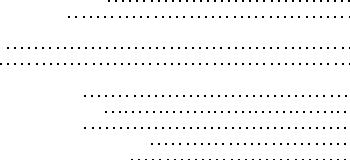
List of Illustrations
FIGURES |
TITLE |
PAGE |
2-1. |
Fuse/Line Voltage Selection Assembly |
2-2 |
2-2. |
6080A/AN Outside Dimensions |
2-4 |
3-1. |
Front Panel Features |
3-2 |
3-2. |
Rear Panel Features |
3-11 |
5A-1. |
Overview of Status Data Structure |
5A-8 |
5A-2. Bit Assignments for the STB and SRE |
5A-9 |
|
5A-3. Bit Assignments for ESR and ESE |
5A-11 |
|
5A-4. Bit Assignments for the ISR, ISCR, and ISCE |
5A-14 |
|
5A-5. |
IEEE-488 Connector and Pin Assignments |
5A-21 |
ix/x
Section 1
Introduction and Specifications
INTRODUCTION |
1-1. |
The 6080A/AN Synthesized RF Signal Generator (also referred to as the "signal generator") is a fully programmable, precision, synthesized signal generator. The 6080A/AN is designed for applications that require good modulation, frequency accuracy, and output level performance with excellent spectral purity. The signal generator is well suited for testing a wide variety of RF components and systems including filters, amplifiers, mixers, and radios, particularly off-channel radio testing.
Specifications of the 6080A/AN are provided at the end of this section. The salient features of the 6080A/AN are as follows:
• RF frequency range of 0.5 MHz to 1024 MHz in 1 Hz steps
•RF level range of +13 to -137 dBm in 0.1 dB steps
•Internal and External Modulation: AM, FM, and Pulse
•Internal 10 Hz to 100 kHz Synthesized Sine Wave Modulation Oscillator
•Fifty Storable and Recallable Memory Locations
•Standard IEEE-488 (GPIB) Interface, complying with ANSI/IEEE Standards 488.1-1987 and 488.2-1987
•Closed-case calibration capabilities for Frequency Reference, AM, FM, and Level.
UNPACKING THE SIGNAL GENERATOR |
1-2. |
The shipping container should include a 6080A/AN Synthesized RF Signal generator, an Operator Manual, a Service Manual, a line power cord and two BNC dust caps. Accessories ordered for the signal generator are shipped in a separate container.
Section 2, "Installation", gives instructions on inspecting the new signal generator and explains what to do if it arrives damaged. Reshipment information is also included.
INTRODUCTION AND SPECIFICATIONS
SAFETY |
1-3. |
This manual contains information, warnings, and cautions that should be followed to ensure safe operation and to maintain the generator in a safe condition.
The signal generator is designed primarily for indoor use and may be operated in temperatures from 0 to 50°C without degradation of its safety.
WARNING
TO AVOID ELECTRIC SHOCK, USE A POWER CORD THAT HAS A THREE-PRONG PLUG. IF THE PROPER POWER CORD IS NOT USED, THE 6080A/AN CASE CAN DEVELOP AN ELECTRICAL POTENTIAL ABOVE EARTH GROUND.
WARNING
 PIVOTING MODULE INSTRUCTIONS
PIVOTING MODULE INSTRUCTIONS
IF NECESSARY DURING REPAIRS, PIVOT THE TOP (SYNTHESIZER)
MODULE UP TO ALLOW ACCESS TO ALL PARTS OF THE SIGNAL
GENERATOR. THE MODULE IS HEAVY AND CARE SHOULD BE EXER-
CISED. THE GAS STRUT IS PROVIDED FOR PROTECTION. CHECK THE
CORRECT OPERATION OFTHE GAS STRUT BY NOTING THE RESISTANCE
TO RAPID CLOSING OF THE MODULE WHILE YOU FIRMLY GRASP THE
MODULE BY THE HANDLE.
OPENING AND CLOSING INSTRUCTIONS ARE GIVEN BELOW AND ARE
REPEATED ON THE DECAL ON THE TOP FRONT OF THE SYNTHESIZER
MODULE.
RAISING THE MODULE:
1.REMOVE THREE HOLD-DOWN SCREWS LOCATED ON THE SIDE RAILS.
2.GRASP THE HANDLE AND LIFT UP.
3.LOCK IN THE UP POSITION BY INSTALLING ONE SCREW IN THE PROTRUDING BOSS ON EACH SIDE RAIL.
LOWERING THE MODULE:
1.SUPPORT IN THE UP POSITION AND REMOVE TWO LOCK UP SCREWS.
2.GRASP THE HANDLE AND LOWER THE MODULE KEEPING YOUR HANDS CLEAR.
3.LOCK IN THE DOWN POSITION BY REINSTALLING THE THREE HOLD-DOWN SCREWS.
1-2
INTRODUCTION AND SPECIFICATIONS
ACCESSORIES |
1-4. |
The accessories and manuals included with each signal generator are listed in Table 1-1. The optional accessories available are listed in Table 1-2.
SIGNAL GENERATOR SPECIFICATIONS |
1-5. |
Table 1-3 lists the 6080A/AN specifications. Table 1-4 lists typical performance characteristics.
Table 1-1. Accessories Included with each Signal Generator
DESCRIPTION |
PART NUMBER |
QUANTITY |
|
|
|
|
|
Operator |
Manual |
857748 |
1 |
Service |
Manual |
868906 |
1 |
Line Power Cord |
284174 |
1 |
|
BNC Dust Cap |
478982 |
2 |
|
|
|
|
|
Table 1-2. Optional Accessories
|
|
|
DESCRIPTION |
ACCESSORY NO. |
|
|
|
||
Rack Mount Kit |
Includes M05-205-600 (5 1/4-inch Rack Mount Ears) |
Y6001 |
||
|
and MOO-280-610 (24-inch Rack Slides) |
|
||
IEEE-488 Shielded Cable, |
1 meter |
Y8021 |
||
IEEE-488 Shielded Cable, |
2 |
meters |
Y8022 |
|
IEEE-488 Shielded Cable, 4 |
meters |
Y8023 |
||
Coaxial Cable, 50 ohms, 3 feet, BNC (m) both ends |
Y9111 |
|||
Coaxial Cable, 50 ohms, 6 feet, BNC (m) both ends |
Y9112 |
|||
|
|
|
|
|
1-3
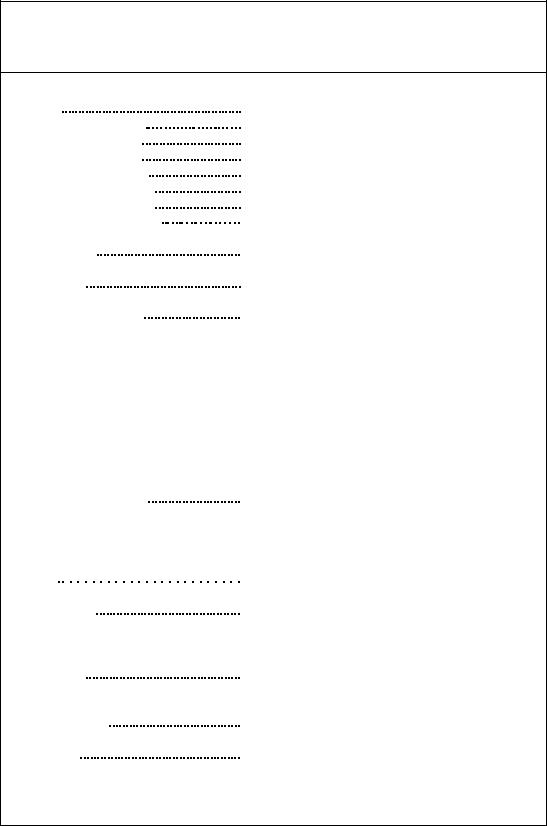
INTRODUCTION AND SPECIFICATIONS
Table1-3.6080A/ANSpecifications
NOTE
Unless otherwise noted, the followingperformance is guaranteedover the specified environmental and ACpower line conditions two hours after turn-on.
FREQUENCY (10-DIGIT DISPLAY) |
|
|
RANGE |
|
0.50 to 1024 MHz in 7 bands: |
BAND |
.50-15 MHz |
0.50 to 14.999999 MHz, |
BAND |
15-32 MHz |
15 to 31.999999 MHz, |
BAND |
32-64 MHz |
32 to 63.999999 MHz, |
BAND |
64-128 MHz |
64 to 127.999999 MHz, |
BAND |
128-256 MHz |
128 to 255.999999 MHz, |
BAND |
256-512 MHz |
256 to 511.999999 MHz, |
BAND |
512-1024 MHz |
512 to 1024 MHz. |
RESOLUTION |
1 Hz |
|
ACCURACY |
Same as reference (See REFERENCE). |
|
REFERENCE (Internal) |
The unit operates on an internal 10 MHz |
|
|
|
Temperature Compensated Crystal Oscillator |
|
|
(TCXO). The frequency variation will be < 10 ppm |
|
|
peak to peak over the temperature range of 0 to |
|
|
+50°C. |
|
|
Internal reference signal (10 MHz) available at rear |
|
|
panel REF OUT connector, level > 0 dBm, terminated |
|
|
into 50 ohms. |
|
|
Frequency stability after 2 hour warmup is < ± 0.05 |
|
|
ppm/hour at +25°C ± 5°C. |
REFERENCE (External) |
Accepts 5 or 10 MHz signal. Level required is 0.5 to |
|
|
|
2.0V RMS into 50 ohms termination. |
AMPLITUDE (3 1/2-DIGIT DISPLAY) |
|
|
RANGE. |
|
+13 to -137 dBm |
RESOLUTION |
0.1 dB (< 1% or 1 nV in Volts). |
|
|
|
Annunciators for dB, dBm, V, mV, μV, dB mV, |
|
|
dBμV,dBf, and EMF. |
ACCURACY |
± 1.5 dB from +13 to -117 dBm |
|
|
|
± 3 dB from -117 to -137 dBm |
SOURCE VSWR |
< 1.5:1 for levels below -10 dBm, < 2.5:1 elsewhere. |
|
FLATNESS |
|
± 1.0 dB @ +10 dBm. |
1-4
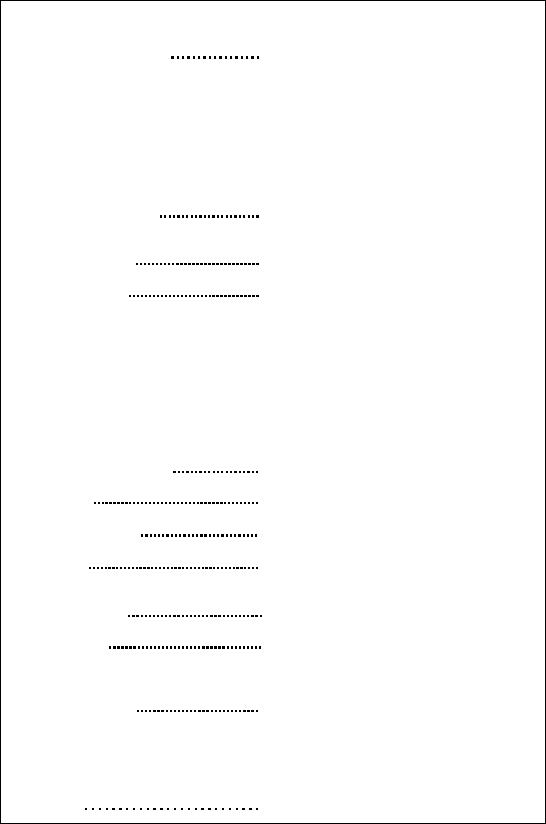
INTRODUCTION AND SPECIFICATIONS
Table 1-3. 6080A/AN Specifications (cont)
SPECTRAL PURITY (CW ONLY) |
|
NON-HARMONIC SPURIOUS |
< -100 dBc for offsets greater than 15 kHz. |
NOTE
Fixed frequency spurs are < -100 dBc or < -140 dBm, whichever is larger.
NOTE
dBc refers to decibels relative to the carrier frequency, or in this casef relative to the signal level.
HARMONICS / SUBHARMONICS |
< -30 dBc for levels < +7 dBm. |
POWER LINE SPURIOUS |
<-40 dBc within ± 15 kHz of carrier. |
RESIDUAL FM (RMS in |
|
0.05to 15-kHz band) |
< 20 Hz |
SSB PHASE NOISE |
<-130 dBc/Hz @ 20 kHz offset for Frequency |
|
< 512 MHz |
|
< -124 dBc/Hz @ 20 kHz offset for Frequency |
|
> 512 MHz |
RESIDUAL AM (in 0.05to 15-kHz Band) |
<-80 dBc. (.01%) |
AMPLITUDE MODULATION (3-DIGIT DISPLAY) |
|
(Amplitude < 0 dBm) |
|
INDICATED DEPTH RANGE |
0 to 99.9%. |
RESOLUTION |
0.1%. |
ACCURACY (0 to 90%) |
± 7% AM at 1 kHz rate |
DISTORTION |
< 5% Total Harmonic Distortion (THD) |
|
@ 50% AM (rates = 0.1, 1, 10 kHz) |
BANDWIDTH (3 dB) |
10 Hz to 100 kHz |
INCIDENTAL FM |
< 200 Hz at 1 kHz rate, 50% AM. |
FREQUENCY MODULATION (3-DIGIT DISPLAY) |
|
DEVIATION RANGES |
0 to 999 Hz |
|
1 to 9.99 kHz |
|
10 to 99.9 kHz |
|
100 to 999 kHz |
|
1 to 4 MHz |
EXT RATES |
DC to 100 kHz |
1-5

INTRODUCTION AND SPECIFICATIONS
Table 1-3. 6080A/AN Specifications (cont)
DEVIATION |
DEV |
RF Frequency |
(rates = .1, 1, 50kHz) |
|
|
|
0 to 1 kHz min |
Frequency < 1 MHz |
|
0 to 10 kHz min |
1 MHz < Frequency < 32 MHz |
|
0 to 100 kHz min |
32 MHz < Frequency < 128 MHz |
|
0 to 1 MHz min |
Frequency > 128 MHz |
RESOLUTION |
3digits. |
|
ACCURACY |
± (5% + 10 Hz) |
|
(measured vs. indicated deviation, |
|
|
1 kHz rate) |
|
|
DISTORTION |
< 5% THD for rates of 0.1, 1, and 50 kHz |
|
(does not include effects |
|
|
of residual FM) |
< 2% THD for deviation < 20 kHz and 1 kHz rate |
|
INCIDENTAL AM |
< 1% AM at 1-kHz rate, for peak deviation < 100 kHz |
|
PULSE MODULATION (RF Frequencies from 10 to 1024 MHz)
ON/OFF RATIO |
35dBminimum |
RISE & FALL TIMES |
< 1 μs |
PULSE WIDTH |
Minimum at least 5 μs |
REP RATE |
Minimum at least 50 Hz to 50 kHz |
EXTERNAL PULSE MODULATION |
The pulse input is TTL compatible and 50 ohm |
|
terminated with an internal active pull-up. It can be |
|
modeled as 1.2V in series with 50 ohms at the pulse |
|
modulation input connector. The signal generator |
|
senses input terminal voltage and turns the RF off |
|
when the terminal voltage drops below 1 ± 0.1V. Max |
|
allowable applied voltage, ± 10V. |
NON-VOLATILE MEMORY |
50 instrument states are retained for typically 2 years, |
|
even with the power mains disconnected. |
REVERSE POWER PROTECTION |
|
PROTECTION LEVEL |
Up to 50 watts from a 50 ohm source. Up to 50V DC. |
|
Signal generator output is AC coupled. Protection is |
|
provided when the signal generator is off. |
TRIP/RESET |
Flashing RF OFF annunciator indicates a tripped |
|
condition. Pushing RF ON/OFF button will reset |
|
signal generator. |
1-6
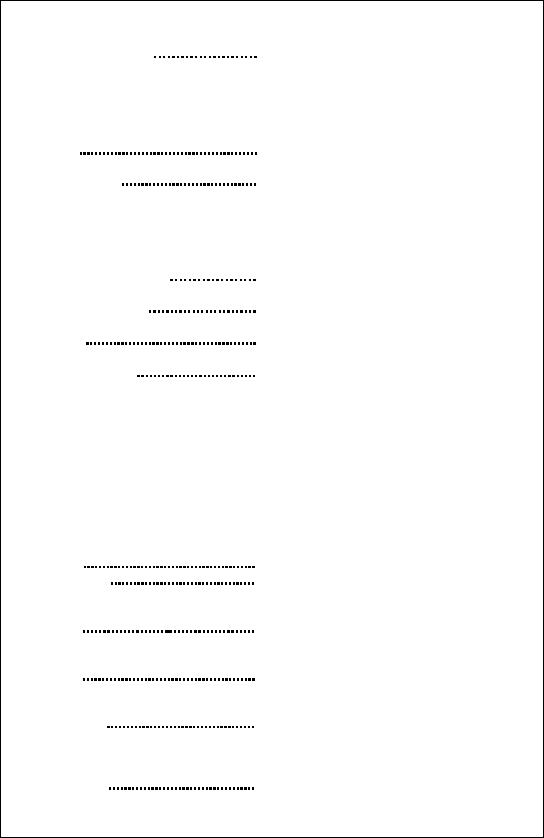
INTRODUCTION AND SPECIFICATIONS
Table 1-3. 6080A/AN Specifications (cont)
IEEE-488 |
|
INTERFACE FUNCTIONS |
SH1, AH1, T5, TE0, L3, LE0, SR1, RL1, PR0, |
|
DC1, DT1, C0, and E2. Complies with IEEE Std. |
|
488.1-1987 and 488.2-1987. |
INTERNAL MODULATION SOURCE |
|
SINE WAVE |
10 Hz to 100 kHz synthesized sine wave. |
DISPLAY RANGES |
00.1 to 99.9 Hz |
|
100 to 999 Hz |
|
1.00 to 9.99 kHz |
|
10.0 to 99.9 kHz |
|
100 to 200 kHz |
FREQUENCY RESOLUTION |
0.1 Hz or 3 digits |
OUTPUT LEVEL RANGE |
0 to 1V RMS into 600 ohms |
DISTORTION |
< 2% THD |
OUTPUT IMPEDANCE |
600 ohms ±10% |
EXTERNAL MODULATION
1V peak provides indicated modulation index.
Nominal input impedance is 600 ohms. Maximum input level is ± 5 V peak.
MODULATION MODES
Any combination of AM, PULSE, and FM, internal or external, may be used.
GENERAL |
|
TEMPERATURE |
|
Operating |
0 to +50°C (+32 to +122°F). |
Non-Operating |
-40 to +75°C (-40 to +167°F). |
HUMIDITY RANGE |
|
Operating |
95% to +30°C, 75% to +40°C, and 45% to +50°C. |
ALTITUDE |
|
Operating |
Up to 10,000 ft. |
VIBRATION |
|
Non-Operating |
5 to 15 Hz at 0.06 inch, 15 to 25 Hz at 0.04 inch, |
|
and 25 to 55 Hz at 0.02 inch, double amplitude (DA). |
SHOCK |
|
Non-Operating |
MIL T 28800D Class 5, Style E. |
1-7
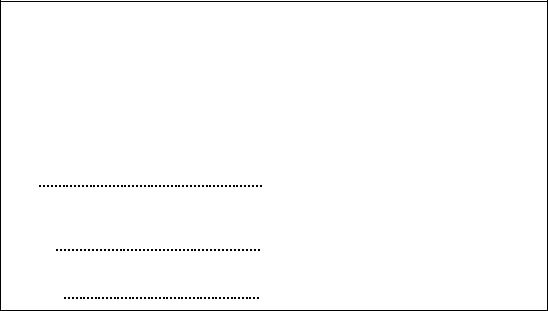
INTRODUCTION AND SPECIFICATIONS
Table 1-3. 6080A/AN Specifications (cont)
ELECTROMAGNETIC COMPATIBILITY.. |
The radiated emissions |
induce < 1 |
μV into a 1-inch |
|
diameter, 2-turn loop, |
1-inch from any surface as |
|
|
measured into a 50-ohm receiver. |
|
|
COMPLIES WITH THE FOLLOWING STANDARDS:
CE03 of MIL-STD-461B (Power and interconnecting leads), 0.015 to 50 MHz.
RE02 of MIL-STD-461B (14 kHz to 10 GHz).
FCC Part 15 (J), class A.
CISPR11.
SIZE |
Width |
Height |
Depth |
|
|
43 cm |
13.3 cm |
59.7 cm |
|
|
17 in |
5.25 in |
23.5 in |
|
POWER |
115/230 VAC, ± 10% 50, 60, and 400 Hz ± 10% |
|||
|
250 VA maximum |
|
|
|
WEIGHT |
<27kg(60Ibs). |
|
|
|
1-8
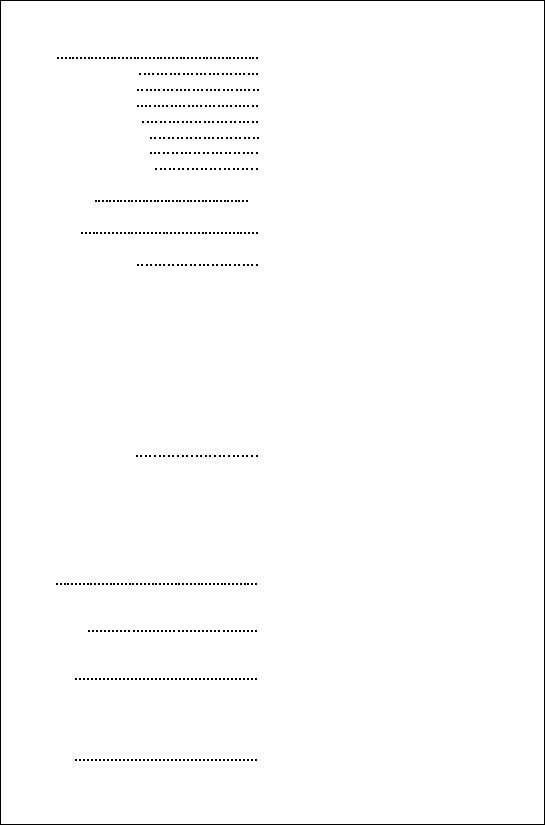
INTRODUCTION AND SPECIFICATIONS
Table 1-4. Typical Signal Generator Performance
FREQUENCY (10-DIGIT DISPLAY) |
|
|
RANGE |
|
0.01 to 1056 MHz in 7 bands: |
BAND |
.01-15 MHz |
0.01 to 14.999999 MHz, |
BAND |
15-32 MHz |
15 to 31.999999 MHz, |
BAND |
32-64 MHz |
32 to 63.999999 MHz, |
BAND |
64-128 MHz |
64 to 127.999999 MHz, |
BAND |
128-256 MHz |
128 to 255.999999 MHz, |
BAND |
256-512 MHz |
256 to 511.999999 MHz, |
BAND |
512-1056 MHz |
512 to 1056 MHz. |
RESOLUTION |
1 Hz |
|
ACCURACY |
Same as reference (See REFERENCE). |
|
REFERENCE (Internal) |
The unit operates on an internal 10 MHz TCXO. The |
|
|
|
Frequency variation will be < 2 ppm peak to peak |
|
|
over the temperature range of 0 to +50°C. Aging rate |
|
|
of < ± 1 ppm/year typical. |
|
|
Internal reference signal (10 MHz) available at rear |
|
|
panel REF OUT connector, level > 0 dBm, terminated |
|
|
in 50 ohms. |
|
|
Frequency stability after 2 hour warmup is < ± 0.05 |
|
|
ppm/hour at +25°C ± 5°C. |
REFERENCE (External) |
Accepts (1, 2, or 5) or 10 MHz signal. Level required |
|
|
|
is 0.2 to 2.0 Vrms into 50-ohms termination. |
NOTE
Choice is internal switch selectable (1, 2, or5 MHz).
AMPLITUDE (3 1/2-DIGIT DISPLAY) |
|
RANGE |
+19 to -140 dBm for Frequency < 512 MHz. |
|
+16 to -140 dBm for Frequency > 512 MHz. |
RESOLUTION |
0.1 dB (< 1% or 1 nV in volts). Annunciators for dB, |
|
dBm, dBf, V, mV, μV, dB mV, dB μV, and EMF. |
ACCURACY |
± 1 dB from +19 to -127 dBm and for F from 0.4 to |
(+23 ± 50°C) |
512 MHz. |
|
± 1 dB from +16 to -127 dBm and for F > 512 MHz. |
ACCURACY |
± 1.5 dB from +19 to -127 dBm and for from 0.4 to |
(0to+50°C) |
512 MHz. |
|
± 1.5 dB from +16 to -127 dBm and for F > 512 MHz. |
1-9
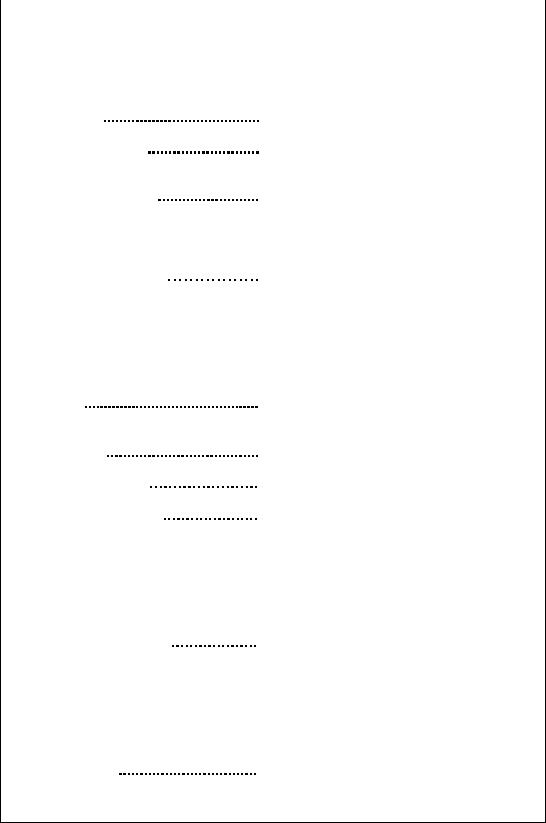
INTRODUCTION AND SPECIFICATIONS
Table 1-4. Typical Signal Generator Performance (cont) |
|
|
|
|
± 2 dB from +19 to -100 dBm and for F from 0.01 to |
|
0.4 MHz. |
|
± 3 dB from -100 to -127 dBm and for F from 0.01 to |
|
0.4 MHz. |
SOURCE VSWR |
< 1.5:1 for levels below +1 dBm, < 2.0:1 elsewhere. |
FLATNESS (+23 ± 5°C) |
± 0.5 dB @ +10 dBm. |
|
F > 0.1 MHz. |
FLATNESS (0 to + 50°C) |
± 0.75 dB @ +10 dBm. |
|
F > 0.1 MHz. |
SPECTRAL PURITY (CW ONLY) |
|
NON-HARMONIC SPURIOUS |
< -100 dBc for offsets greater than 10 kHz. |
NOTE
Fixed frequency spurs are < -100 dBc or < -140 dBm whichever is larger.
NOTE
dBc refers to decibels relative to the carrier frequency, or in this case, relative to the signal level.
HARMONICS |
< -30 dBc for levels < +13 dBm. |
|
< -25 dBc for levels < +16 dBm. |
SUBHARMONICS |
None |
POWER LINE SPURIOUS |
< -50 dBc within ± 10 kHz of carrier. |
RESIDUAL FM (RMS in 0.3- |
< 0.2 Hz for .01 to 15 MHz Band |
to 3-kHz band) |
< 0.2 Hz for 15 to 32 MHz Band |
|
< 0.2 Hz for 32 to 64 MHz Band |
|
< 0.2 Hz for 64 to 128 MHz Band |
|
< 0.2 Hz for 128 to 256 MHz Band |
|
< 0.5 Hz for 256 to 512 MHz Band |
|
< 1 Hz for 512 to 1056 MHz Band |
RESIDUAL FM (RMS in 0.05to 15-kHz band)
<0.5 Hz for .01 to 15 MHz Band
<0.5 Hz for 15 to 32 MHz Band
<0.5 Hz for 32 to 64 MHz Band
<0.5 Hz for 64 to 128 MHz Band
<0.5 Hz for 128 to 256 MHz Band
<1 Hz for 256 to 512 MHz Band
<2 Hz for 512 to 1056 MHz Band
SSB PHASE NOISE |
< -131 dBc/Hz @ 20 kHz offset |
|
@ Frequency - 250 MHz |
1-10
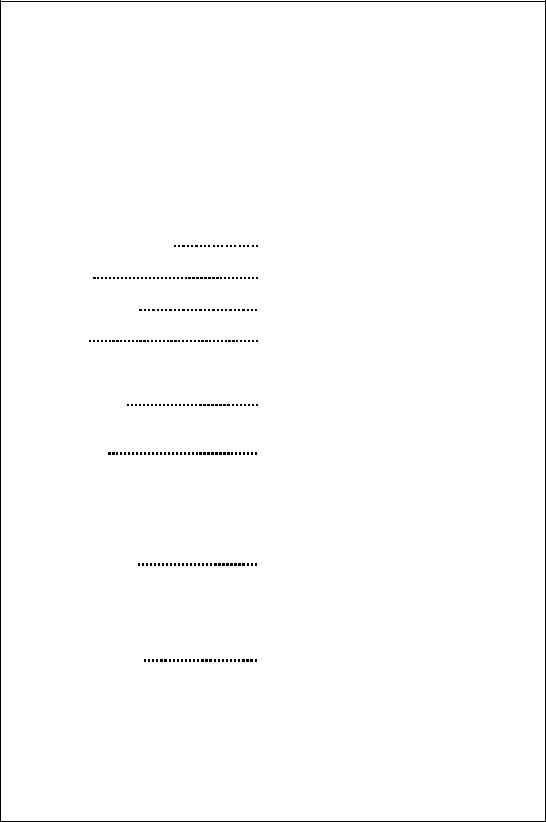
INTRODUCTION AND SPECIFICATIONS
Table 1-4. Typical Signal Generator Performance (cont)
|
|
|
< -136 dBc/Hz @ 20 kHz offset |
|
|
|
@ Frequency = 1 GHz |
|
|
|
< -140 dBc/Hz @ 20 kHz offset |
|
|
@ Frequency = 500 MHz |
|
BROADBAND SSB PHASE |
|
|
|
NOISE FLOOR |
|
< |
-140 dBc/Hz @ 100 kHz offset @ +13 dBm. |
RESIDUAL AM (in 0.05to 15-kHz Band) |
|
< -80 dBc. |
|
AMPLITUDE MODULATION (3-DIGIT DISPLAY) |
|||
(Amplitude < +10 dBm) |
|
|
|
INDICATED DEPTH RANGE |
0 to 99.9%. |
||
RESOLUTION |
0.1%. |
||
ACCURACY (0 to 90%) |
|
±(2% AM + 4% of setting) at 1 kHz rate |
|
DISTORTION |
< 1.5% THD to 30% AM |
||
(rate = 1 kHz) |
|
< 3% THD to 70% AM |
|
|
|
< 5% THD to 90% AM |
|
BANDWIDTH (3 dB) |
10 Hz to 100 kHz |
||
|
|
DC to 100 kHz (external only) |
|
INCIDENTAL FM |
< 200 Hz at 1 kHz rate, 50% AM. |
||
|
|
NOTE |
|
AM specifications apply where RF frequency - Modulation Frequency is greater than 150 kHz
FREQUENCY MODULATION (3-DIGIT DISPLAY) |
|
|
DEVIATION RANGES |
0 to 999 Hz |
|
|
1 to 9.99 kHz |
|
|
10 to 99.9 kHz |
|
|
100 to 999 kHz |
|
|
1 to 4 MHz |
|
MAXIMUM DEVIATION |
DEV |
RF Frequency |
|
500 kHz |
.01 to 15 MHz |
|
125 kHz |
15 to 32 MHz |
|
250 kHz |
32 to 64 MHz |
|
500 kHz |
64 to 128 MHz |
|
1 MHz |
128 to 256 MHz |
|
2 MHz |
256 to 512 MHz |
|
4 MHz |
512 to 1056 MHz |
1-11

INTRODUCTION AND SPECIFICATIONS
Table 1-4. Typical Signal Generator Performance (cont)
|
Minimum FM rate at max deviation in any band, |
||
|
ACFM mode is 60 Hz. |
|
|
|
@ 1/2 max deviation....30 Hz |
|
|
|
@ 1/4 max deviation.... 15 Hz from 1/4 to 1/64 max |
||
|
deviation.... 15 Hz |
|
|
|
@ 1/64 max deviation.... 60 Hz |
|
|
|
@ 1/128 max deviation.... 40 Hz |
|
|
|
@ 1/256 or less max deviation.... 15 Hz |
||
|
No limit in DCFM mode. |
|
|
RESOLUTION |
3 digits. |
|
|
ACCURACY |
±(5% of setting + 10 Hz) for rates of .05 to 50 kHz. |
||
DISTORTION |
< 2% THD for rates from .05 to 50 kHz |
||
(does not include effects of residual noise) |
< 1% THD at 1/2 or less max deviation and rates |
||
|
from 0.1 to 50 kHz. |
|
|
LOW DISTORTION MODE |
< 0.3% THD + noise @ 3.5 kHz deviation and @ |
||
(SPCL 731 ) |
rates from 0.3 to 3 kHz |
|
|
BANDWIDTH (1.5 dB) |
ACFM 20 Hz to 100 kHz subject to low frequency |
||
|
max deviation limits |
|
|
|
DCFM DC to 100 kHz |
|
|
INCIDENTAL AM |
< 1% AM at 1 kHz rate, for the maximum deviation or |
||
|
100 kHz, whichever is less. Valid for RF frequency |
||
|
> 0.5 MHz |
|
|
DCFM CENTER FREQUENCY ERROR ...... < (0.1% of dev + 500 Hz) @ F = 1 GHz |
|||
|
NOTE |
|
|
After DCFM Cal and without any FM range changes |
|||
LOW RATE EXTERNAL FM |
RF Band |
MAX DEV @ 10 Hz Rate |
|
(Access by SPCL 711) |
|
sine wave |
square wave |
MAX DEVIATION |
01 to 15 MHz |
80 kHz |
40 kHz |
|
15 to 32 MHz |
20 kHz |
10 kHz |
|
32 to 64 MHz |
40 kHz |
20 kHz |
|
64 to 128 MHz |
80 kHz |
40 kHz |
|
128 to 256 MHz |
160 kHz |
80 kHz |
|
256 to 512 MHz |
320 kHz |
160 kHz |
|
512 to 1056 MHz |
640 kHz |
320 kHz |
DROOP |
< 30% on a 5 Hz square wave |
|
|
BANDWIDTH (3 dB) |
0.5 Hz to 100 kHz (typical) |
|
|
|
|
|
|
1-12
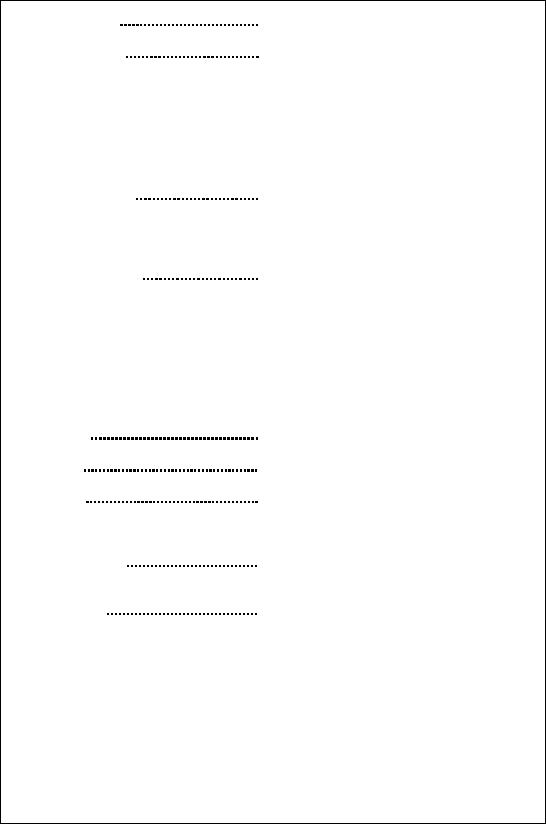
INTRODUCTION AND SPECIFICATIONS
Table 1-4. Typical Signal Generator Performance (cont)
MAX DC INPUT |
± 10 mV |
INCIDENTAL AM |
< 1% AM @ 1 kHz rate and < 10 kHz dev |
|
NOTE |
|
FM specifications apply where: |
|
RF Frequency - Deviation > 150 kHz |
|
RF Frequency - Mod Rate > 150 kHz |
PHASE MODULATION (3 DIGIT DISPLAY)
DEVIATION RANGES
MAXIMUM DEVIATION
RESOLUTION
ACCURACY
DISTORTION
(does not include effects of residual Phase noise)
BANDWIDTH (3 dB)
INCIDENTAL AM
HIGH RATE PHASE MODULATION (Access by SPCL 721)
0 to .999 rad
1 to 9.99 rad
10 to 99.9 rad
100 to 400 rad
DEV |
RF FREQUENCY |
50 rad |
.01 to 15 MHz |
12.5 rad |
15 to 32 MHz |
25 rad |
32 to 64 MHz |
50 rad |
64 to 128 MHz |
100 rad |
128 to 256 MHz |
200 rad |
256 to 512 MHz |
400 rad |
512 to 1056 MHz |
3digits |
|
±(5% + 0.1 rad) at 1 kHz rate.
<2% THD for 1 kHz rate.
<1% THD for 1/2 or less max deviation for 1 kHz rate
ACPM 20 Hz to 15 kHz
DCPM DC to 15 kHz
<1% AM at 1 kHz rate for peak dev
<10 rad. Valid for F > 1 MHz.
MAX DEV |
RF FREQUENCY |
5 rad |
.01 to 15 MHz |
1.25 rad |
15 to 32 MHz |
2.5 rad |
32 to 64 MHz |
5 rad |
64 to 128 MHz |
10 rad |
128 to 256 MHz |
20 rad |
256 to 512 MHz |
40 rad |
512 to 1056 MHz |
1-13
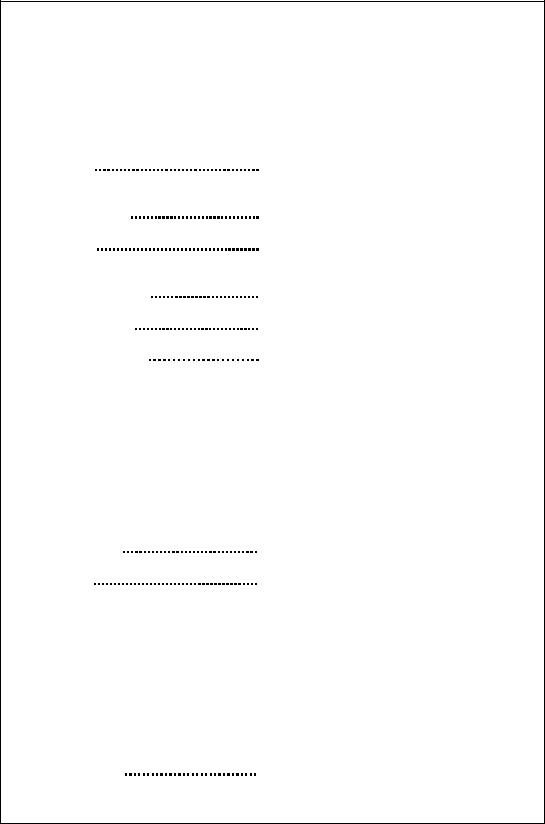
INTRODUCTION AND SPECIFICATIONS
Table 1-4. Typical Signal Generator Performance (cont)
HIGH RATE PHASE MODULATION |
ACPM 20 Hz to 100 kHz |
BANDWIDTH (3 dB) |
DCPM DC to 100 kHz |
(Access by SPCL 721) |
|
NOTE
Phase Modulation specs are valid where RF Frequency - Modulation Frequency > 150 kHz
PULSE MODULATION (RF FREQUENCIES FROM 10 TO 1056 MHz)
ON/OFF RATIO |
40 dB minimum for frequencies from 100 to 1056 MHz |
|
60 dB minimum for frequencies less than 100 MHz |
RISE & FALL TIMES |
< 15 ns |
LEVEL ERROR |
For pulse widths > 50 ns, power in the pulse will be |
|
within ±0.7 dB of the measured CW level. |
DUTY CYCLE (ext mod) |
0-100% |
REP RATE (ext mod) |
DC-16 MHz |
INTERNAL MODULATION |
Internal rates, approx 50% duty cycle. |
EXTERNAL PULSE MODULATION |
The pulse input is TTL compatible and 50 ohm |
|
terminated with an internal active pull-up. It can be |
|
modeled as 1.2V in series with 50 ohms at the pulse |
|
modulation input connector. The signal generator |
|
senses input terminal voltage and turns the RF off |
|
when the terminal voltage drops below 1 ± 0.1V. Max |
|
allowable applied voltage, ±10V. |
PULSE MODULATION (RF FREQUENCIES < 10 MHz) |
|
RISE & FALL TIMES |
< 2 X period of RF Frequency. |
LEVEL ERROR |
For pulse widths >10 X period of RF Frequency, |
|
power in the pulse will be within ±0.7 dB of the |
|
measured CW level. |
Other specifications are the same as for the 10 to 1056 MHz range.
NON-VOLATILE MEMORY
50 instrument states are retained for typically 2 years, even with the power mains disconnected.
REVERSE POWER PROTECTION |
|
PROTECTION LEVEL |
Up to 50 watts from a 50 ohm source, up to 50V DC. |
|
Signal generator output is AC coupled. Protection is |
|
provided when the signal generator is off. |
1-14
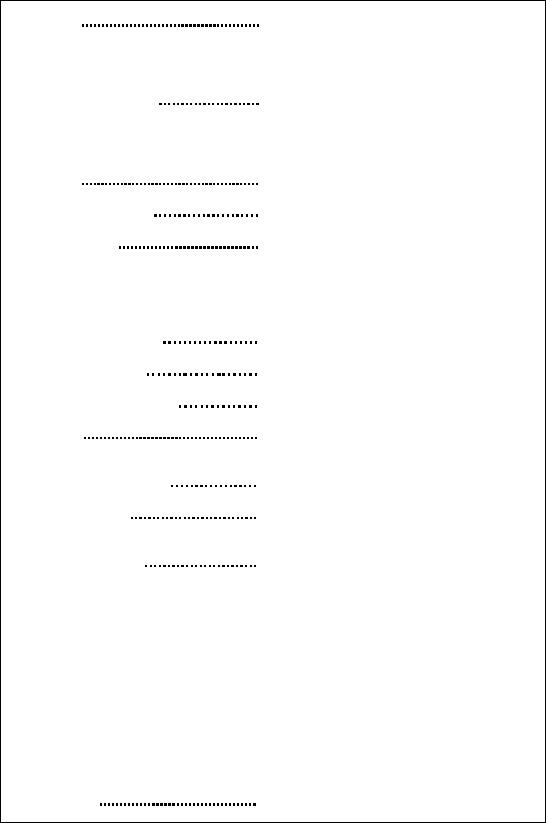
INTRODUCTION AND SPECIFICATIONS
Table 1-4. Typical Signal Generator Performance (cont)
TRIP/RESET |
Flashing RF OFF annunciator indicates a tripped |
|
condition. Pushing RF ON/OFF button will reset |
|
signalgenerator. |
IEEE-488 |
|
INTERFACE FUNCTIONS |
SH1, AH1, T5, TE0, L3, LE0, SR1, RL1, PP0, DC1, |
|
DT1, C0, and E2. |
INTERNAL MODULATION SOURCE |
|
SINE WAVE |
0.1 Hz to 200 kHz synthesized sine wave. |
FREQUENCY ACCURACY |
Same as reference ±7 mHz |
DISPLAY RANGES |
00.1 to 99.9 Hz |
|
100 to 999 Hz |
|
1.00 to 9.99 kHz |
|
10.0 to 99.9 kHz |
|
100 to 200 kHz |
FREQUENCY RESOLUTION |
0.1 Hz or 3 digits |
OUTPUT LEVEL RANGE |
0 to 4V peak into 600 ohms |
OUTPUT LEVEL RESOLUTION |
3 digits or 4 mv peak, whichever is larger |
DISTORTION |
< 0.15% THD for output levels > 2V peak and mod |
|
frequency < 20 kHz |
OUTPUT LEVEL ACCURACY |
±(4% + 15 mV) for mod frequency < 100 kHz |
OUTPUT IMPEDANCE |
600 ohms ±2% |
OTHER WAVEFORMS AVAILABLE |
|
BY SPECIAL FUNCTION |
Square Wave (Fmod < 2 kHz) |
|
Triangle Wave (Fmod < 5 kHz) |
EXTERNAL MODULATION INPUTS |
|
1V peak provides indicated modulation index. Nominal input impedance is 600 ohms. Maximum input level is ± 5 V peak.
MODULATION MODES
Any combination of AM, PULSE, and FM or ØM, internal or external, may be used.
DIGITAL FREQUENCY SWEEP
SWEEP MODES |
Auto, single, or manual |
1-15

INTRODUCTION AND SPECIFICATIONS
Table 1-4. Typical Signal Generator Performance (cont)
SWEEP FUNCTIONS |
Symmetrical sweep, Asymmetrical sweep, Sweep |
|
speed |
DATA ENTRY PARAMETERS |
Sweep width and sweep increment |
SWEEP SPEED |
Minimum 40 ms per increment selectable as (mini- |
|
mum + dwell time) where dwell time can be 0, 20, 50, |
|
100, 200, or 500 ms at each increment. |
SWEEP OUTPUT |
0 to +10 (± 10%) V. Up to 4096 points in a stepped |
|
ramp. Load > 2 kΩ. |
PENLIFT |
TTL, high for retrace. Load > 2 kΩ. |
DIGITAL AMPLITUDE SWEEP |
|
SWEEP MODES |
Auto, single, or manual Linear (Volts) or Log (dB) |
SWEEP FUNCTIONS |
Symmetrical sweep, Asymmetrical sweep, Sweep |
|
speed |
DATA ENTRY PARAMETERS |
Sweep width and sweep increment |
SWEEP SPEED |
Minimum 30 ms per increment selectable as (mini- |
|
mum + dwell time) where dwell time can be 0, 20, 50, |
|
100, 200, or 500 ms at each increment. |
SWEEP OUTPUT |
0 to +10 (± 10%) V. Up to 4096 points in a stepped |
|
ramp. Load > 2 kΩ. |
PENLIFT |
TTL, high for retrace. Load > 2 kΩ. |
GENERAL |
|
TEMPERATURE |
|
Operating |
0 to +50°C (+32 to +122°F). |
Non-Operating |
-40 to +75°C (-40 to +167°F). |
HUMIDITY RANGE |
|
Operating |
95% to +30°C, 75% to+40°C, and 45% to +50°C. |
ALTITUDE |
|
Operating |
Up to 10,000 ft. |
VIBRATION |
|
Non-Operating |
5 to 15 Hz at 0.06 inch, 15 to 25 Hz at 0.04 inch, and |
|
25 to 55 Hz at 0.02 inch, double amplitude (DA). |
SHOCK |
|
Non-Operating |
Per MIL T 28800D Class 5, Style E. |
|
|
1-16
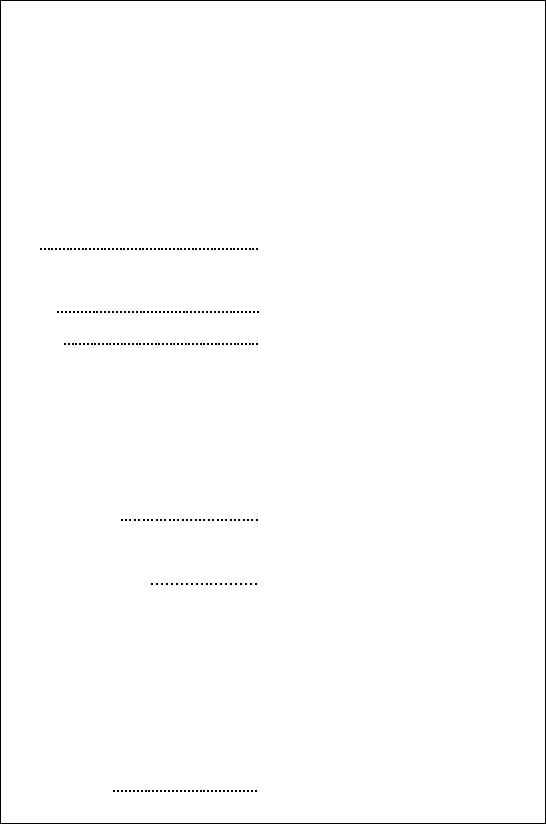
INTRODUCTION AND SPECIFICATIONS
Table 1-4. Typical Signal Generator Performance (cont)
ELECTROMAGNETIC COMPATIBILITY.. The radiated emissions induce < 1 μV into a 1-inch diameter, 2-turn loop, 1-inch from any surface as measured into a 50-ohm receiver.
COMPLIES WITH THE FOLLOWING STANDARDS:
CE03 of MIL-STD-461B (Power and interconnecting leads), 0.015 to 50 MHz.
RE02 of MIL-STD-461B (14 kHz to 10 GHz).
FCC Parti 5 (J), class A. |
|
|
|
CISPR 11. |
|
|
|
SIZE |
Width |
Height |
Depth |
|
43cm |
13.3cm |
59.7cm |
|
17 in |
5.25 in |
23.5 in |
POWER |
115/230 VAC, ±10% 50, 60, & 400 Hz ±10% < 250 VA |
||
WEIGHT |
<27kg(60Ibs). |
|
|
SUPPLEMENTAL CHARACTERISTICS
The following characteristics are provided to assist in the application of the signal generator and to describe the typical performance that can be expected.
FREQUENCY SWITCHING SPEED |
< 100 ms to be within 100 Hz. |
|
AMPLITUDE SWITCHING SPEED |
< 100 ms to be within 0.1 dB. |
|
AMPLITUDE RANGE |
Programmable from +20 to -147.4 dBm. Fixed-range, |
|
|
selected by special function, allows for more than 12 |
|
|
dB of vernier without switching the attenuator. |
|
EXTERNAL MODULATION |
Annunciators indicate when a 1 V peak signal is |
|
|
applied, ±2%, over a 0.02to 100-kHz band. |
|
IEEE |
All controls except the power switch and the internal/ |
|
|
external reference switch are remotely programmable |
|
|
via IEEE-488 Interface (Std 488.2-1987). All status |
|
|
including the option complement are available |
|
|
remotely. |
|
EXTERNAL REFERENCE LOCK RANGE |
± 10 ppm |
|
PULSE MODULATION |
|
|
PULSE DELAY |
OFF/ON |
80 ns typ |
|
ON/OFF |
65 ns typ |
1-17

Table 1-4. Typical Signal Generator Performance (cont)
DCFM DRIFT |
3 ppm/hr for < 1/16 max deviation |
(after 2 hour warmup and at constant |
8 ppm/hr for > 1/16 max deviation |
temperature) |
|
|
|
1-18
